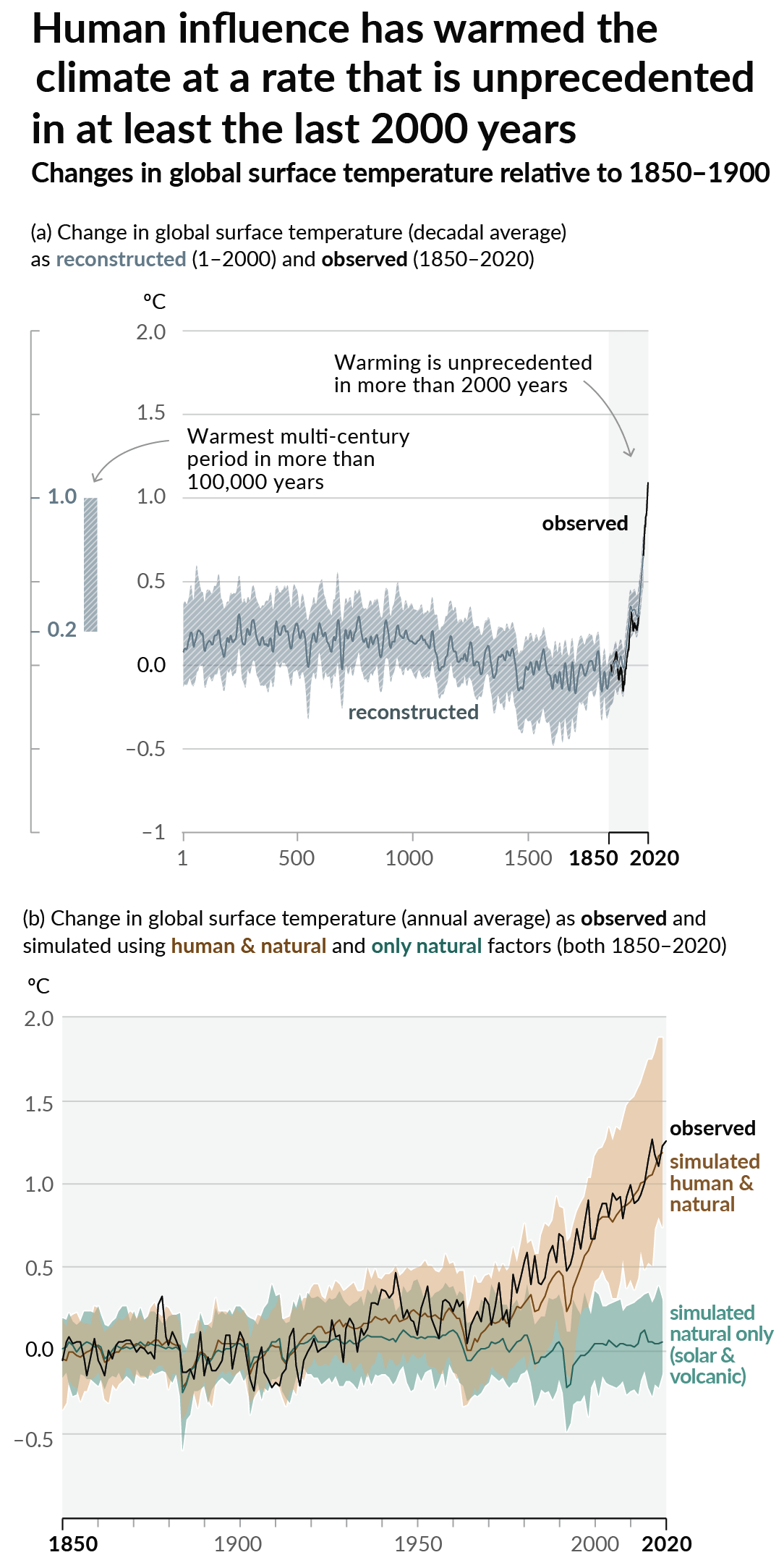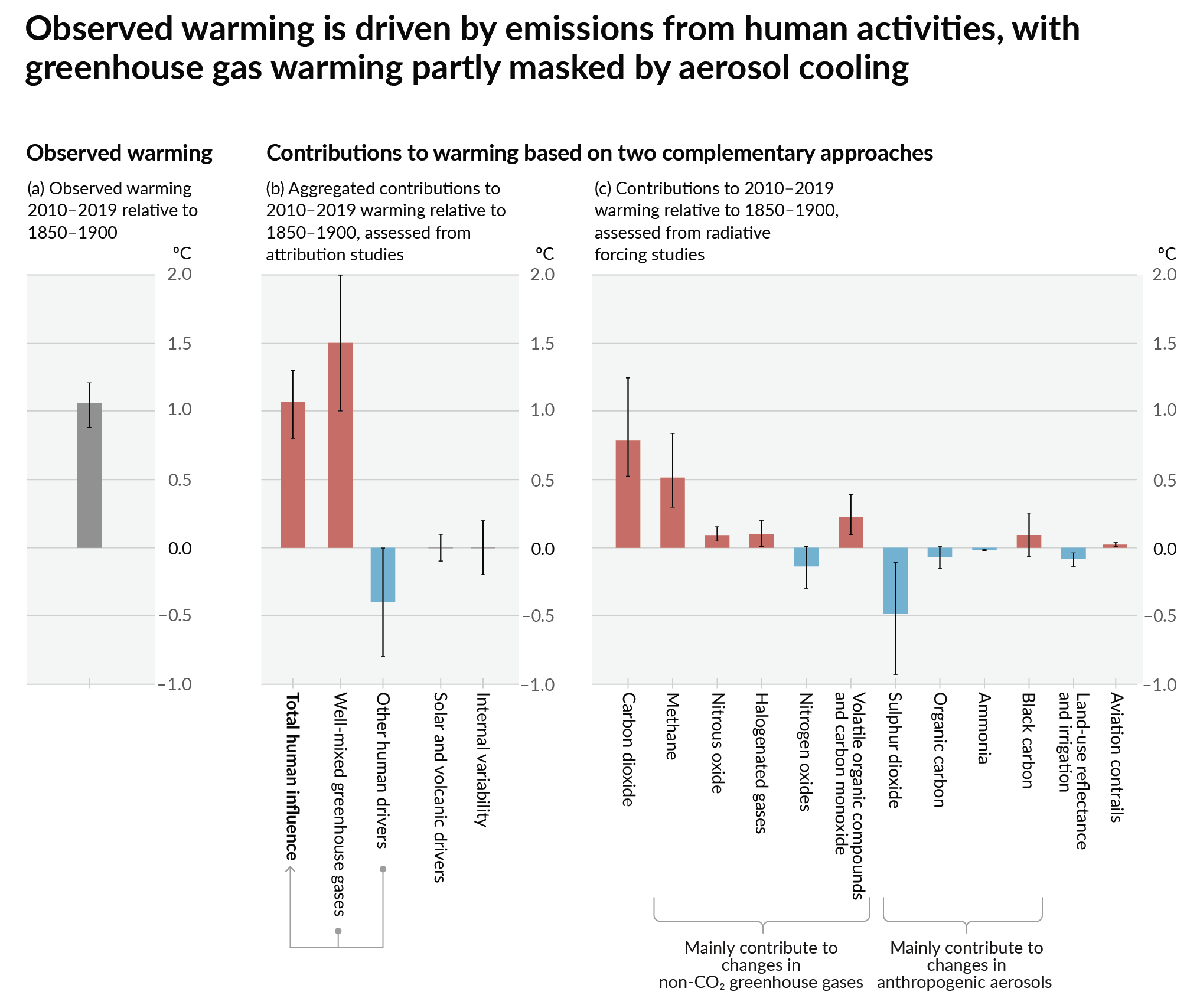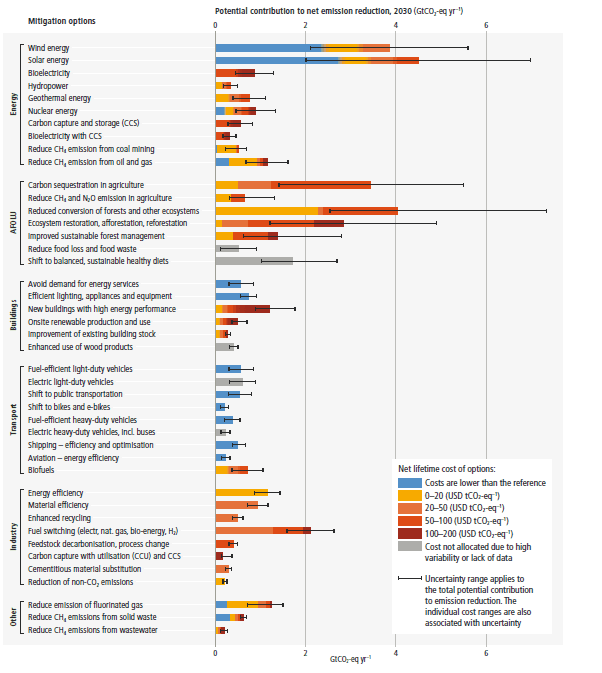4
41
6
90
7
67
8
78
10
12
11
47
12
39
13
32
14
23
Q&A: Will China and the BRICS fill the ‘leadership gap’ on climate change
(www.carbonbrief.org)
17
15
18
9
19
46
20
93
21
61
22
56
23
39
Effects of Human-Caused Greenhouse Gas Emissions on U.S. Climate, Health, and Welfare
(nap.nationalacademies.org)
24
48
Human-Caused Warming Tripled the Death Toll of European Heat Waves This Summer, New Report Shows
(insideclimatenews.org)
view more: next ›
Climate - truthful information about climate, related activism and politics.
7342 readers
411 users here now
Discussion of climate, how it is changing, activism around that, the politics, and the energy systems change we need in order to stabilize things.
As a starting point, the burning of fossil fuels, and to a lesser extent deforestation and release of methane are responsible for the warming in recent decades:

How much each change to the atmosphere has warmed the world:

Recommended actions to cut greenhouse gas emissions in the near future:

Anti-science, inactivism, and unsupported conspiracy theories are not ok here.
founded 2 years ago
MODERATORS
